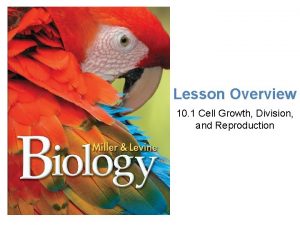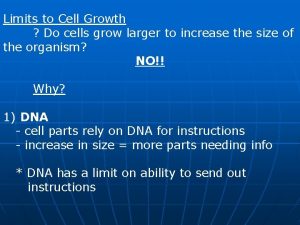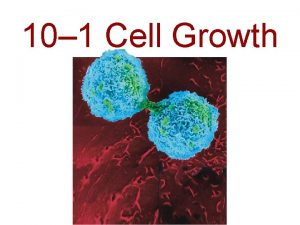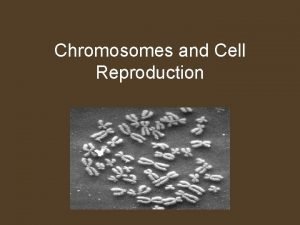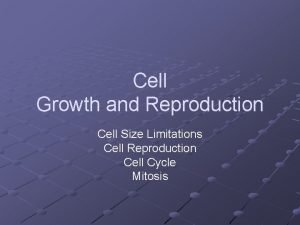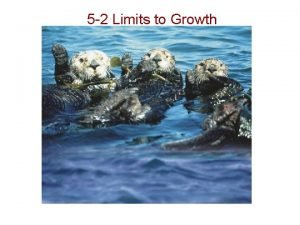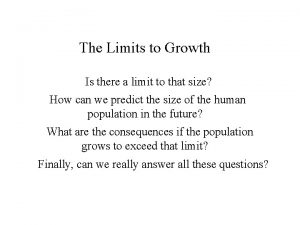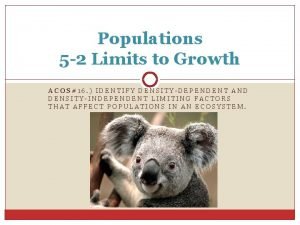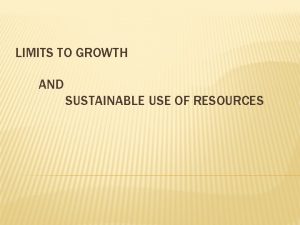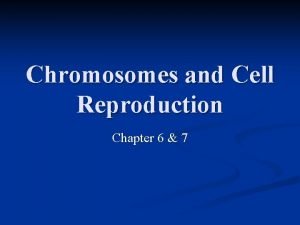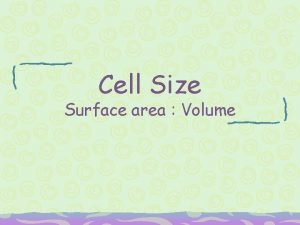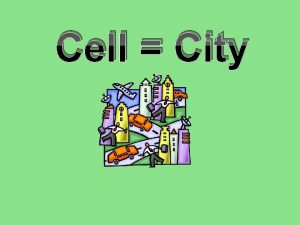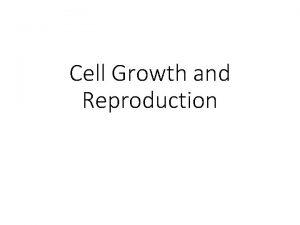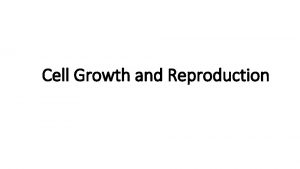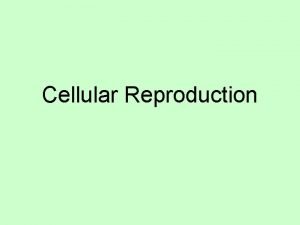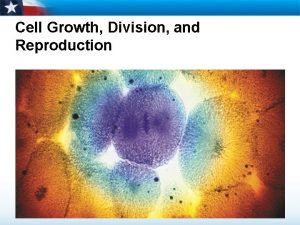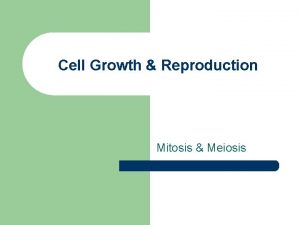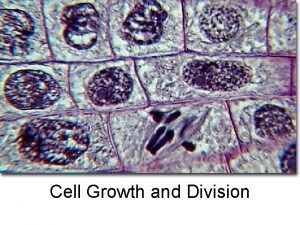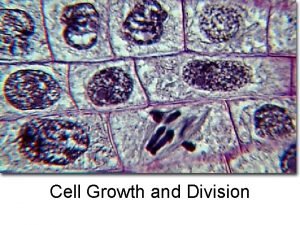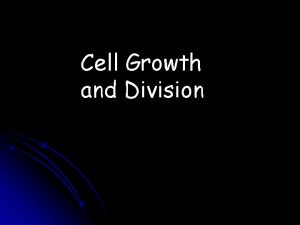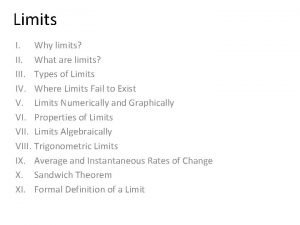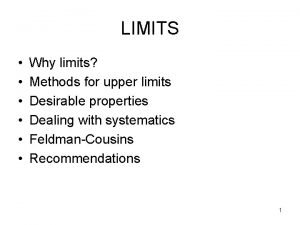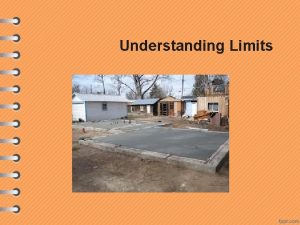Cell Growth and Reproduction Limits to cell growth
















- Slides: 16

Cell Growth and Reproduction

Limits to cell growth DNA – can only control the needs of a small cell n Cell Size - cell must have a low surface to volume ratio n Cell Division – when a cell gets too large to control or function efficiently, cell division takes place n

Cell Cycle nwith growth, nuclear division, and cytoplasmic division

Interphase G 1 – growth phase – cell gets bigger and develops n S – synthesis phase – DNA in nucleus is copied n G 2 – growth phase – more growing and developing; produce more organelles, enzymes, centrioles are replicated, etc. n

Mitosis nnuclear division nyields two daughter nuclei that are genetically identical nused for growth and healing

Prophase Chromatin condenses into chromosomes, 2 identical strands of DNA attached by a centromere n Centrioles move to opposite ends of the cell n Nuclear envelope and nucleolus disappear n Spindle starts to appear n

Metaphase Chromosomes line up about midway between the centrioles n Spindle fibers attach to chromosomes at centromeres n

Anaphase n n n Centromeres are pulled apart as spindle fibers contracts Chromatids (half of a chromosome) are pulled in opposite directions Chromatids are pulled to opposite ends of the cell

Telophase n n n Chromatids complete journey to the ends of the cell Chromatin is formed as DNA elongates Nuclear envelope forms around each set of DNA Spindle disappears Nucleoli appear in each nucleus

Cytokinesis Cytoplasmic Division n Begins during anaphase n Furrow / ring starts to develop in the middle of the cell membrane n

Cytokinesis In plants, you start to develop a cell plate n Ring contracts until it completely separates the two new nuclei and about ½ organelles into each new cell n


Control of the Cell Cycle cyclins (proteins) regulate cell growth n Internal regulators – only move to the next phase of the cell cycle when the previous phase is complete n

Control of the Cell Cycle n External regulators – if there is room, a cell divides; if neighboring cells are touching, cell growth is inhibited because space is scarce

Cancer n Uncontrolled cell growth n Tumors are cells that do not respond to cell regulators n Cells could also become “immortal”; they don’t finish cell development and die, so new cells just build up

Apoptosis Normal part of development for most cells in a multi-celled organism n Once cells stop dividing or specializing; special enzymes will break it down and scavenger WBCs come and clean up the mess n
 Limits involving infinity
Limits involving infinity Cell growth division and reproduction
Cell growth division and reproduction Limits to cell growth
Limits to cell growth Limits to cell growth
Limits to cell growth Real limits statistics
Real limits statistics Hare lynx
Hare lynx Binary fission in bacteria
Binary fission in bacteria Sexual vs asexual reproduction venn diagram
Sexual vs asexual reproduction venn diagram Growth and reproduction
Growth and reproduction Growth and reproduction
Growth and reproduction When do density-dependent operate most strongly
When do density-dependent operate most strongly Logistic growth curve equation
Logistic growth curve equation Limiting factor definition
Limiting factor definition Limits to growth
Limits to growth Chapter 6 chromosomes and cell reproduction
Chapter 6 chromosomes and cell reproduction Cell surface area definition
Cell surface area definition Cell city analogy project
Cell city analogy project

